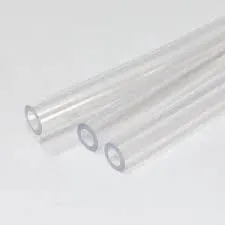12-р сар . 24, 2024 11:19 Back to list
polyethylene welding rod
Understanding Polyethylene Welding Rods and Their Applications
Polyethylene, a widely used thermoplastic polymer, is renowned for its versatility, durability, and resistance to various environmental factors. One of the key aspects of working with polyethylene is the ability to join pieces of this material effectively. This is where polyethylene welding rods come into play. These rods are specifically designed for welding polyethylene materials, providing a strong and durable joint that can withstand the rigors of their intended applications.
What Are Polyethylene Welding Rods?
Polyethylene welding rods are often made from the same or similar grade of polyethylene as the materials they are used to join. They come in various diameters and lengths, designed to suit different welding techniques and requirements. Typically, these rods are extruded to ensure consistent diameter and melting properties, which are crucial for achieving a high-quality weld.
Welding rods can be manufactured from different types of polyethylene, including Low-Density Polyethylene (LDPE) and High-Density Polyethylene (HDPE). Each type brings its own set of properties, making them suitable for various applications. For instance, LDPE is more flexible and resilient, making it ideal for applications requiring a higher degree of deformation without breakage. Meanwhile, HDPE boasts higher tensile strength and rigidity, making it suitable for more demanding structural applications.
Welding Techniques
There are several welding techniques that can be employed using polyethylene welding rods. The most common methods include
1. Hot Air Welding This process involves the use of hot air to melt both the welding rod and the base polyethylene materials. A welding gun provides a controlled flow of hot air, which helps to fuse the materials together effectively.
2. Extrusion Welding In this method, a welding machine melts the rod and extrudes it into the joint area, creating a bond as it cools. This technique is especially useful for thicker sections of polyethylene.
3. Rope Welding This technique uses thick polyethylene rods that are heated at both ends and pressed together. It’s often applied in making seals and repairs.
polyethylene welding rod

4. Electrofusion This is a more specialized technique where welded joints incorporate an electrofusing process to create strong bonds, often used in piping systems.
Each method has its advantages and optimal conditions depending on the specific polyethylene materials and project requirements
.Applications of Polyethylene Welding Rods
The applications of polyethylene welding rods are vast and varied. They are commonly used in industries such as
- Construction Polyethylene is frequently used in construction for membranes, liners, and piping. Welding rods allow for the assembly of these components into cohesive structures.
- Water Management HDPE pipes are prevalent in water supply and drainage systems. Polyethylene welding rods enable the creation of leak-proof joints that are crucial for long-term reliability.
- Marine Applications In marine environments, polyethylene welding rods can be used to repair and construct boats, docks, and other structures, thanks to the material's resistance to saltwater and environmental degradation.
- Manufacturing and Fabrication Many manufacturers utilize polyethylene welding rods to create various products, from storage containers to industrial parts, demonstrating the material's versatility.
Conclusion
Polyethylene welding rods are an integral tool in working with polyethylene materials, allowing for strong, durable joints that can endure various applications. Understanding the types of polyethylene, welding techniques, and their applications is essential for anyone involved in construction, manufacturing, or repairs involving this important thermoplastic material. As technologies and methods continue to evolve, the importance and application of polyethylene welding rods will likely expand, offering even more possibilities within various industries.
-
Durable PP Rigid Sheet: Lightweight, Chemical Resistant Solutions
NewsAug.21,2025
-
PVC Grey Sheet for Extraction: Chemical Resistant & Durable
NewsAug.19,2025
-
Durable PVC Pipe Fittings for Plumbing & Irrigation Needs
NewsAug.18,2025
-
HDPE Steel Belt Reinforced Spiral Corrugated Pipe | High Strength
NewsAug.17,2025
-
HDPE Pipe Fittings: Durable, Leak-Proof Solutions
NewsAug.16,2025
-
Premium CPVC Sheet: High-Temp & Chemical Resistant Solutions
NewsAug.15,2025

